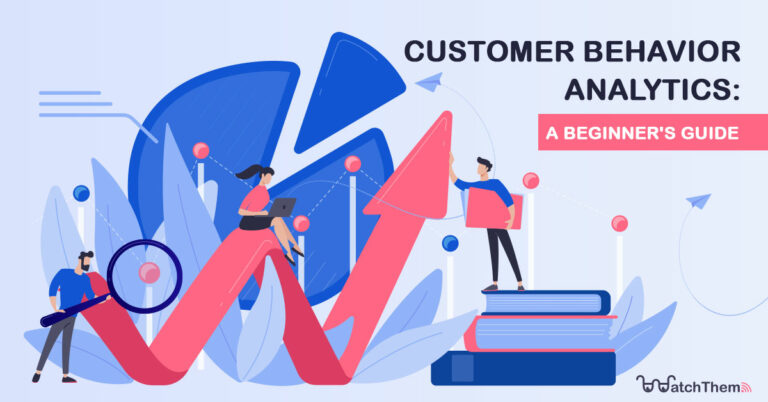Page Contents
The more you know your customers, the better services you can offer. That’s a general rule for all businesses because customers are the most valuable asset you possess. Want to unlock the secrets of customers’ likes and dislikes? Then, you should learn more about customer behavior analytics and find the best tools for this purpose.
You may wonder how to start? Don’t worry! You’re at the right place. In this article, we will tell you all about customer behavior analysis and how you can use this data to enhance customer experience and encourage them to finish their purchase on your website.
Let’s dive in to see the reason behind the significance of behavior data-driven strategies in today’s marketplace.
What Is Customer Behavior Data?
All the actions visitors take from the moment they land on your site until they make a purchase are collected as customer behavior data. These activities include purchasing an item, abandoning a shopping cart, or canceling an order.
The main idea of collecting this data is to determine what may prevent a customer from finishing a purchase, what motivates them to take the next step, and what satisfies their needs. Through the collection, measurement, and analysis of data, you can enhance the customer experience and boost sales.
What Is a Customer Behavior Analysis?
A customer behavior analysis is a complete investigation of how your customers act across each interaction point of their journey. Conducting customer data analysis properly allows you to uncover your customer needs; so you can satisfy them and increase your customer loyalty.
Why Is Conducting Customer Behavior Analytics So Important?
Understanding customer behavior is crucial for success in today’s competitive market. By analyzing their behavior, you can predict their values and choose a website personalization strategy that aligns to their needs. This personalized approach not only enhances the customer experience but also leads to increased loyalty and revenue.
Let’s jump in to discuss how customer behavior analytics helps businesses:
1. Focusing on the Most Valuable Customers
User behavior analytics help businesses identify and focus on high-value buyers. Only by analyzing the behavioral patterns of customers can you identify and target the most profitable customer groups.
2. Optimizing and Personalizing Content Marketing Efforts
By following your customers’ behaviors, you can discover what type of content they like the most. Accordingly, customer behavior analytics can help you optimize and deliver content that is more engaging to them. Furthermore, a good understanding of their lifestyle gives you valuable information on the place or platform to publish content.
Content personalization is another practical way of increasing audience engagement with a brand. Research indicates that 80% of B2B companies that personalized their content found it very effective compared to non-personalized content:
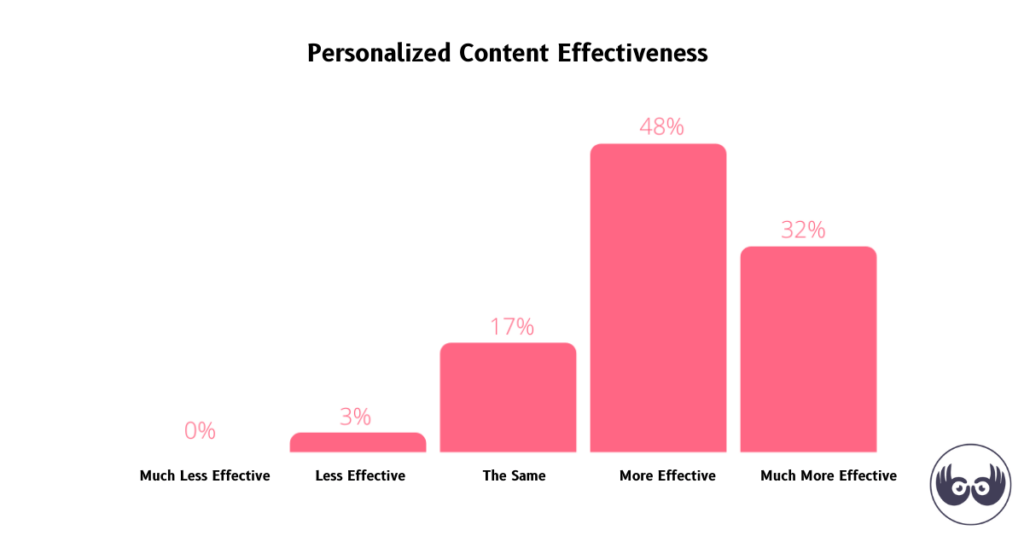

Some responding companies didn’t adopt a content personalization approach in the same research. For example, when examined, over 50% reported whether they didn’t have access to data or technology needed for content personalization. And that was their reason for not adopting a content personalization strategy.
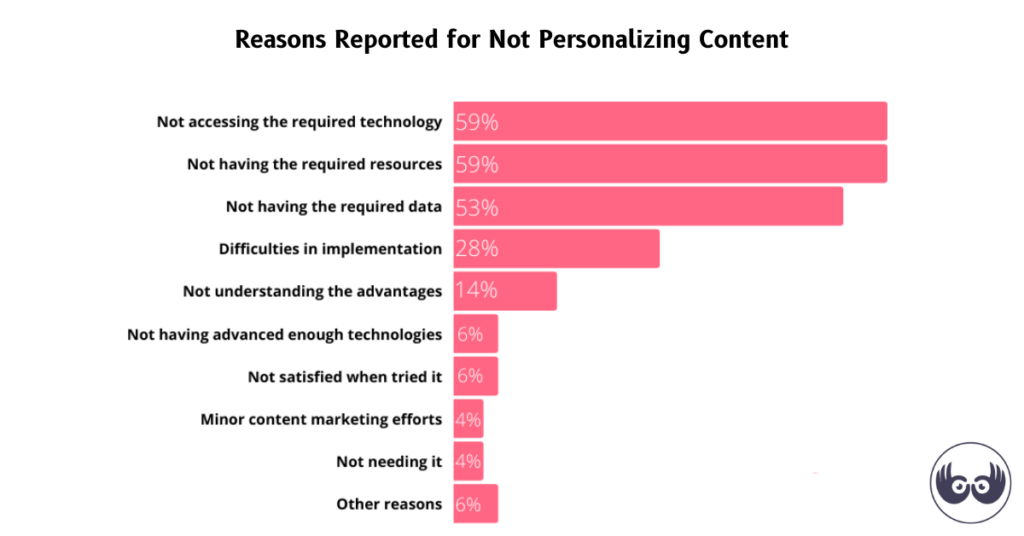

There could be no better way to emphasize the role of consumer behavior data in customizing content than these interesting statistics.
3. Enhancing Customer Retention Rate
Customer retention is the ability of a business to keep its existing customers and encourage them to continue buying its products or services. The customer retention rate is a crucial marketing metric that you should monitor closely.
Retaining previous customers is equally important to attracting new ones. You can improve customer retention metric by acknowledging your customers before leaving you for a competitor.
While acquiring customers is essential, it’s more imperative to keep them happy and engaged. By distinguishing positive and negative consumer traits, a behavior assessment will assist the staff in lowering the churn rate.
One of the advantages of customer behavior analytics is understanding your customers and their buying habits. Also, having access to such data makes it easy for you to develop tools and strategies to retain them.
How to Conduct Customer Behavior Analysis?
So far, we know how important customer behavior is. As a result, you can track this behavior and use the valuable data in your marketing strategies.
Customer behavior is influenced by personality traits, social trends, and psychological responses. Now, let’s discuss how to perform it in six easy steps:
Step #1: Audience Segmentation
Categorizing your customer base is a good start for analyzing customer behavior. Next, try identifying the characteristics of your most valuable customers. These characteristics can include their age, gender, location, interests, and habits.
You should know the different segmentation models so you can easily categorize your customers into these segmentations:
- Demographic Segmentation: Make a list of your customers based on their age, gender, income, education, and marital status.
- Geographic Segmentation: As the name indicates, this segmentation categorizes customers based on their country, city, or any other geographical location that is important to your business.
- Psychographic Segmentation: This might be the difficult one because you should be able to identify your customers’ personalities to be able to find out their interests, values, and attitudes.
- Technographic Segmentation: This one is easy because you can easily collect the data you need to categorize your customers based on the technology they use, such as their mobile OS, apps, and desktop software.
- Behavioral Segmentation: You may be confused between this segmentation and the psychographic one. But you should note that in this group, you should be able to categorize customers based on their actions, not their thoughts.
- Needs-Based Segmentation: What products do you think your customers need? Group them based on this requirement.
It is important to note that you can choose one segmentation for your business. There is no need to have all these segmentations for your business. Furthermore, even with free tools like Google Analytics and Google Search Console, you can easily create most of these segmentations.
Step #2: Examine each Group
It is crucial to analyze each customer segment’s needs and perceived values, which result in their decision to buy from you. For example, is it the urgency that matters most to them? Is it the convenience you offer by your eCommerce website?
Additionally, you can gather this data by creating a customer behavior analytics poll so that you can ask your customers about their needs and attitudes. Finally, look for similar traits in each group for qualitative customer behavior data.
Step #3: Extract Quantitative Data
Besides the qualitative data collected through interviews, you can collect quantitative data from different sources, such as social media insights, website subscribers, reviews, and product comments.
Additionally, you can obtain statistics from third-party researchers. However, the information may not be specific to your customer behavior analytics, as it is more generalized. Nonetheless, it can still be useful for gaining insights.
How Can Quantitative Data Help Your Business
You may wonder why quantitative data is important for customer behavior analysis. First, you should know that this data can help you measure and evaluate the objective and numerical aspects of customer behavior. Next, it can help you answer some critical questions, including:
- Who are your most valuable or loyal customers?
- What are the most popular or profitable products or features?
- What are the main sources or channels of traffic or conversions?
- What are the key performance indicators (KPIs) or metrics of your business or campaign?
- How do your customers compare to your competitors or industry benchmarks?
Quantitative data can provide you with reliable and accurate information that can help you make data-driven decisions and optimize your marketing strategy and customer experience.
Furthermore, this data can also help you test and validate your hypotheses or assumptions about customer behavior, such as:
- Does changing the color or position of a button increase or decrease the click-through rate?
- Does offering a discount or free shipping increase or decrease the conversion rate?
- Does sending an email or a push notification increase or decrease the retention rate?
- Does personalizing the content or offer increase or decrease the satisfaction rate?
- Does segmenting the customers by behavior or preference increase or decrease the loyalty rate?
Step #4: Compare Different Data Types
Look for recurring trends in your customers’ behavior patterns by comparing qualitative and quantitative data. Use the data sets as a guide at each customer journey stage. Analyze your data based on customer experience at each stage and for each customer segment.
Once you have done this, you can find trends and patterns in their traits and obstacles in each stage. It’s important to have a particular focus on your valuable customer segment, the ones who generate most of the revenue for you.
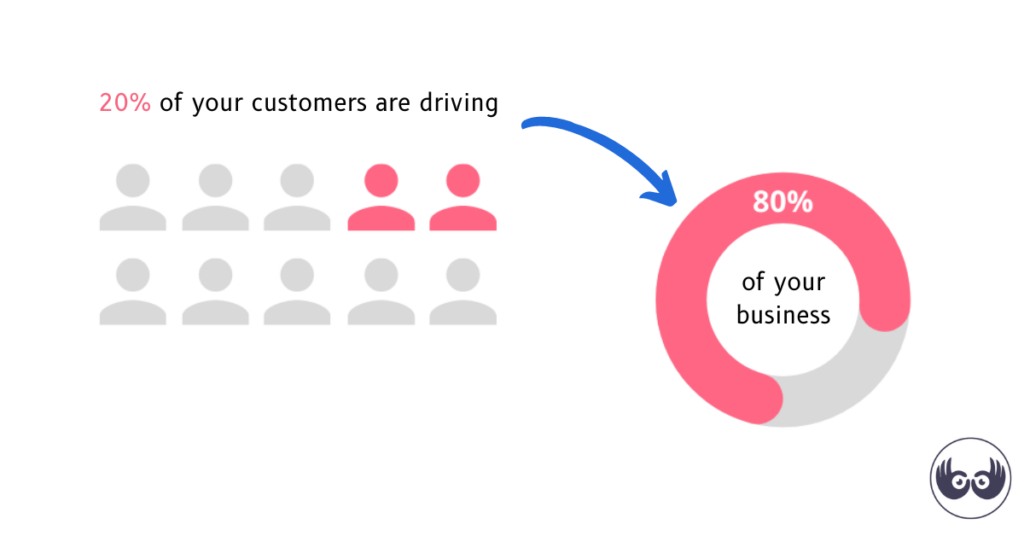

Step #5: Test your Analysis in a Campaign
Now that you have an idea of what each customer segment needs, it’s time to use the data. You can apply your findings to customize your next campaign for various customer groups.
As mentioned earlier, you can apply customer habits analytics to deliver content on the most suitable channel. Moreover, test your analytics and ask your customers to check how they are experiencing the new changes.
Step #6: Analyze the Outcomes
You’ll undoubtedly want to see how the modifications succeeded after you’ve given them enough time to evaluate. To assess the impact of the new campaigns, use metrics such as conversion rate and CLV. It is crucial to regularly review the findings because emerging technology, politics, and events affect customer behavior.
You can also run an A/B testing to see if the new design or campaign performs better than the previous one. Furthermore, using a session replay software can help you see how a visitor is surfing your web.


What Platforms Can Help with Customer Behavior Analytics?
In most cases, visitor tracking tools can help you gather data about customer behavior. Now, let’s check out some of the best customer behavior analytics tools you can use.
1- Woopra
This tool gives you deep analysis about your customer journey. But that’s not all. You can segment your customers in Woopra and then analyze how each segment acts on your website. Therefore, you will find out which group of people are your valued customers.
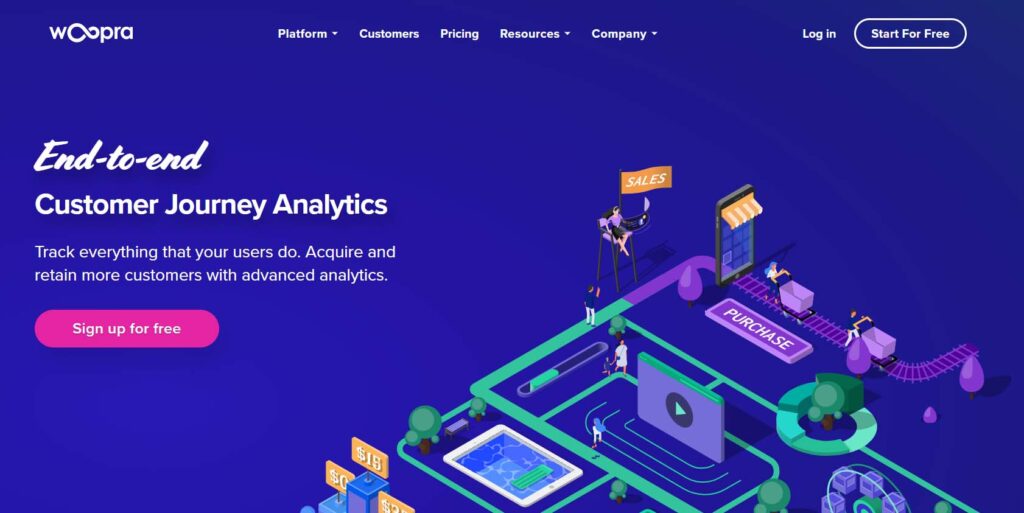

The best part is that Woopra offers a generous free version for up to 90 days. Therefore, it can be useful for startups and small businesses.
2- Hotjar
Undoubtedly, on the list of the top customer behavior analytics tools, Hotjar is the most popular platform. Hotjar has different features to collect customer behavior data, such as heat maps, which show which part of your web page you receive more clicks. Furthermore, its visitor behavior recording feature can also give you more data about how easily they can find their way to the shopping cart.
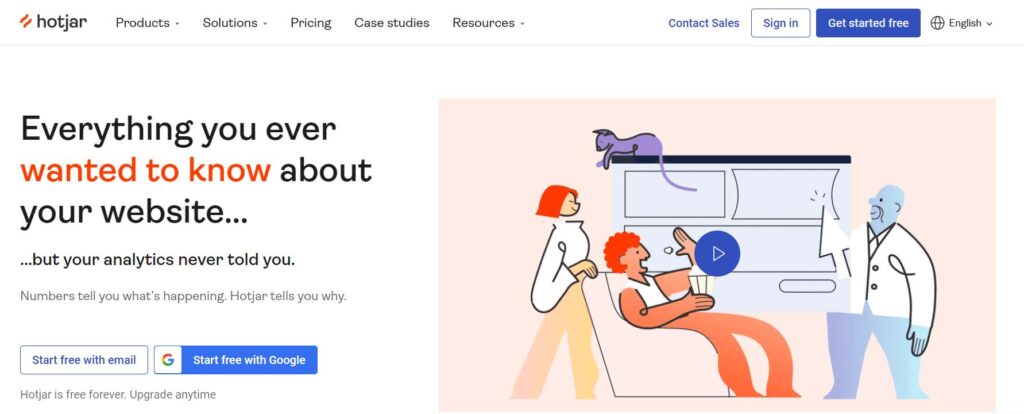

In addition, Hotjar is among the tools that offers its features for free. Although it only allows free users to access limited features, it is still very helpful for small businesses. On the other hand, it offers different pricing plans based on the company’s size so everyone can benefit from this tool.
3- Vertica
When it comes to evaluating high-volume data, everything is different. The speed and accuracy of analyzing customer behavior are now more important. That’s when Vertica can save you. You can upload your data to this platform and analyze it based on different factors.


Vertica also offers a free version for a limited period. But it’s enough for businesses to check out if this platform is suitable for evaluating their marketing goals.
4- Userlytics
Testing what users experience on your website can lead to better design and optimization. Userlytics has an experienced team that can give consultations about the usability and UX of your website. So, in addition to the analytics generated by its AI tool, you can chat with a human assistant to improve the user experience of your website.
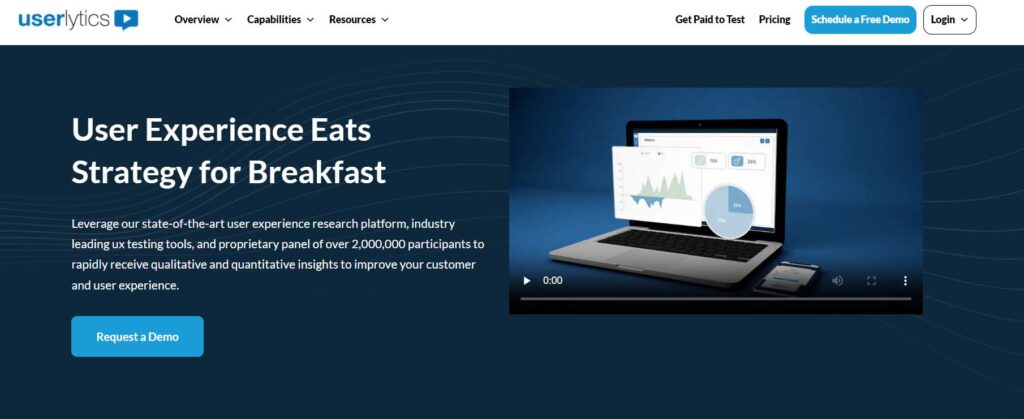

Like most customer behavior analytics tools, Userlytics offers a limited free version so businesses can check out its features and decide if it’s the right tool.
FAQs
So far, you know that customer behavior data is important to your business, but you may still have questions. Check out these questions that most people ask about this subject. If your question is not here, don’t hesitate to leave us a comment and ask.
Q1- What Are Customer Behavior Metrics?
There are several metrics you can check while analyzing customer behavior. However, some of them might be more important to your business or marketing goal. These metrics are: conversion rate, bounce rate, clicks, page views, time on page, exit rate, cart abandoned rate, average session duration, and click-through-rate (CTR).
Q2- How Do You Analyze Buyer Behavior?
First, you should be able to collect user behavior data. For this purpose, website click tracker tools can help you collect valuable data about what visitors do on your website. Then, you should be able to analyze this data to determine if your website requires optimization. Ultimately, it is better to do an A/B testing to see if your new design or content performs better than the previous one.
Q3- What Are the 3 Stages of Customer Analytics?
You may think analyzing customers is complex and requires several steps. But it has three main stages that you should follow: data collection, segmentation, and analysis.
Conclusion
It is essential for every business to analyze customer behavior because this data can give you much information about what your customers need and like. Furthermore, you can discover which part of your website requires optimization. Using customer behavior analytics tools can accelerate your speed in analyzing and evaluating data and incorporating them into your marketing plans.

